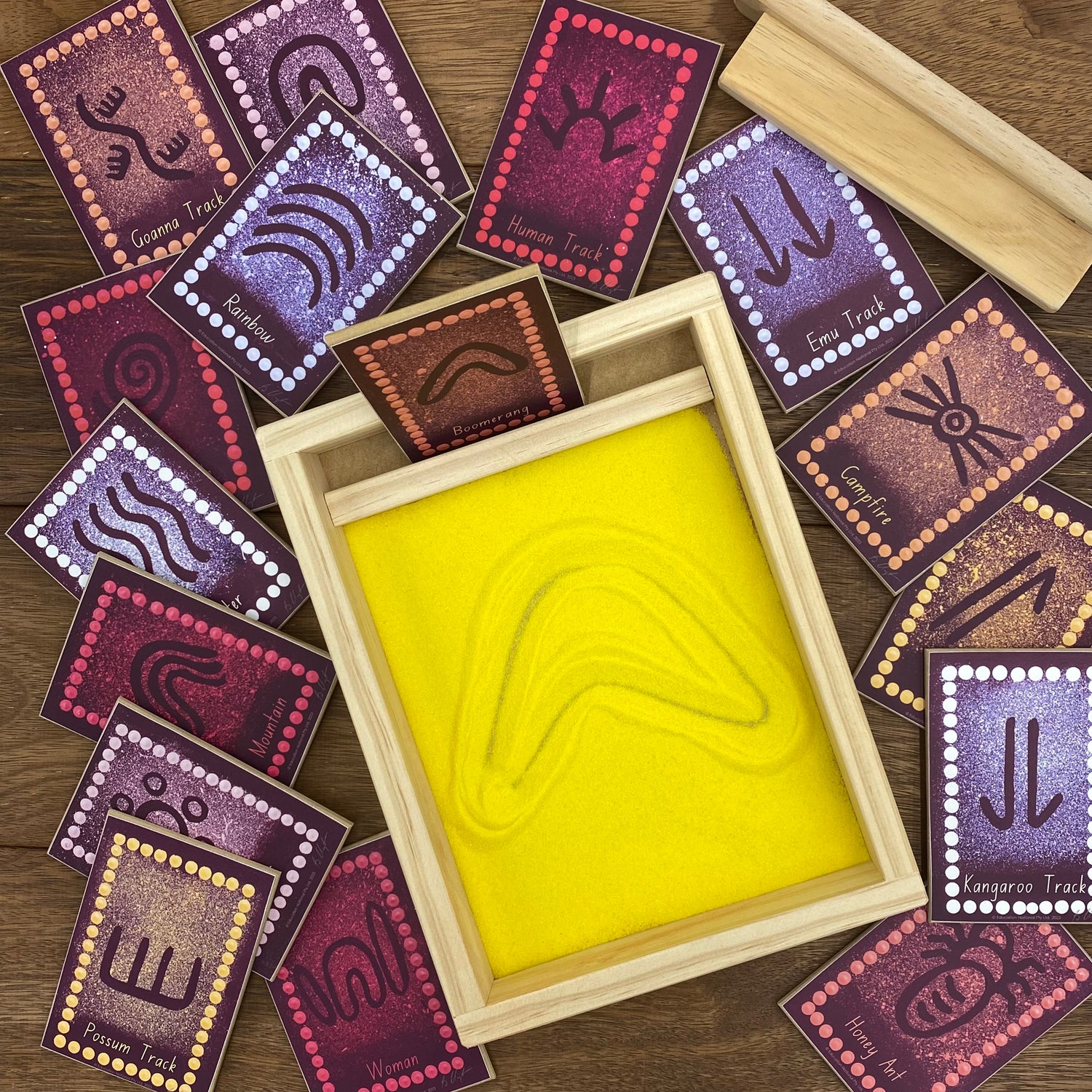
Benefits of Sensory Play for Children
Harnessing the Power of Sensory Play in your classroom
Educators in today’s early learning environments are increasingly encountering a common hurdle: engaging children in activities that not only capture their attention but also support their multifaceted development. Traditional teaching methods often fall short in stimulating the sensory pathways crucial for young learners’ growth.
Picture a classroom where activities fail to ignite the full spectrum of a child’s sensory experiences. The one-dimensional approach can leave educators feeling frustrated and children disengaged, potentially stunting their natural inclination towards curiosity and exploration.
Solution: Sensory Play Kits, like the Aboriginal Symbols Sand Drawing Game offer a dynamic solution. By integrating these tools, educators can align their teaching methods with the Early Years Learning Framework, ensuring every child’s learning journey is enriched with sensory experiences that are not only educational but deeply rooted in cultural heritage. These kits are particularly effective in settings requiring Autism Sensory Toys, as they cater to inclusive education and specific needs, ensuring every child feels supported.
The Spectrum of Sensory Play Benefits
Sensory play is an educational approach that encompasses activities stimulating a child’s senses, enhancing cognitive, motor, and social development. Here are some advantages:
- Cognitive Expansion: Sensory play aids in building nerve connections in the brain’s pathways, enhancing a child’s ability to complete more complex learning tasks.
- Motor Skill Development: It supports the development of Fine Motor Skills Toys, crucial for daily activities and academic tasks.
- Problem-Solving Skills: As children navigate through sensory play, they learn to work through challenges and find solutions.
- Language Development: Describing their play, children develop new ways of expressing themselves and understanding the world.
Aligning with the Early Years Learning Framework
The Aboriginal Symbols Sand Drawing Game not only provides sensory benefits but also aligns with the Framework’s learning outcomes. It supports Outcome 4 – Children are confident and involved learners – as children navigate through tactile experiences, developing an understanding of Indigenous culture through play. Incorporating Montessori Sensory Activities emphasizes Montessori principles in sensory play, offering a structured yet flexible learning environment.
Tips and Insights for Educators
- Customise the Experience: Tailor sensory activities to the individual needs and interests of each child, ensuring inclusivity. This includes integrating Educational Craft Kits and Mindfulness Activities for Kids to offer a holistic educational experience.
- Create Sensory Rich Environments: Incorporate a variety of materials and textures to stimulate different senses. Outdoor Sensory Play encourages outdoor learning environments, providing a fresh context for exploration and learning.
- Cultural Integration: Use resources like the Aboriginal Art Yarning Circle Rug to embed cultural understanding in sensory play, making Indigenous teacher resources and Aboriginal art for school a cornerstone of your curriculum.
- Reflect and Adapt: Continuously observe children’s responses to sensory play and adapt activities accordingly to maximize their learning potential. Sensory Room Ideas for Schools can guide institutions looking to create or enhance sensory rooms, providing a dedicated space for sensory exploration.
Conclusion
Sensory play is an essential element of early childhood education, and tools like the Aboriginal Symbols Sand Drawing Game are key in delivering these experiences. By incorporating this game into your sensory play curriculum, you can offer a culturally enriched, engaging, and developmentally appropriate learning experience. Embrace the benefits of sensory play with Indigenous resources and take the first step by exploring our products. Together, we can shape a more inclusive, stimulating, and culturally aware learning environment for our children.
